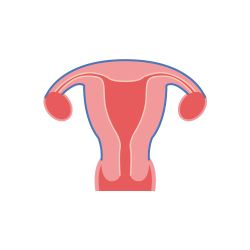Uterine transplants are not new. The first successful uterine transplant was done in Sweden in 2013. America boasted its first successful uterine transplant three years later at Baylor. But these were in cis-women born without a functioning uterus. Now, an Indian doctor is proposing uterine transplantation for trans-women. The reaction in the bioethics community is mixed.
Cis and Trans are words I first learned in chemistry. They describe different isomers -- compounds with the same chemical formula but different structural arrangements. Sometimes the differences are significant, sometimes not so. The terms are also used in genetics. The prefixes, derived from Latin, are emotionally neutral.
By comparison, when it comes to gender, those prefixes are often emotionally laden. They refer to the match between the self-determined gender identity of someone with their biological sex as identified at birth. Generally, a biological “female” is someone born with a “vagina,” and a biological male is someone born with a penis. A cis person identifies with the chromosomal manifestation assigned at birth, while the gender identity of a trans person does not match the biological determinant assigned at birth. (Trans can also mean someone who doesn’t identify with gender’s strict binary classification, sometimes called queer).
Sometimes the dichotomy – based on biological manifestation is not clear-cut; for example, a biological female (defined as carrying an XX chromosome) born with ambiguous genitalia is often called “intersex.” Sometimes cis-women (as biologically determined) are born without a uterus – and it is in this context that uterine transplants were initially “conceived.”
The uterine transplant procedure is complicated and risky. When used for the purpose of giving birth, it would require three or four operations, including IVF, womb implantation, C-Section after a successful pregnancy, and removal of the transplanted uterus on termination of pregnancy (The transplant is not intended to be permanent). And it’s also expensive. Some estimates put it as high as a half-million dollars.
The five-hour surgical transplantation of a uterus is also rare. Currently, about 70 successful uterine transplants have been performed around the globe– all in cis-gender women. About half fail. It first requires locating a compatible donor (the donor’s uterus removal is also a five-hour procedure), although doctors are experimenting with cadavers. In the future, CRISPR gene editing might render this obstacle less formidable. It also requires the administration of immunosuppressives for as long as the implant remains.
"That’s a lot of surgery to create the ability to carry a child, and obviously, you have exposure to immunosuppressants, anesthesia, and a huge price tag."
NYU bioethicist Art Caplan.
“Once the medical community accepts this as a treatment for cis-women with uterine infertility, such as the congenital absence of a womb, then it would be illegal to deny a trans-female who has completed her transition,"
Surgeon Christopher Inglefield, founder of the London Transgender Clinic.
Even in cis-women, many experts, such as Dr. Horsager-Boehrer, “strongly believe that women can become mothers in a variety of ways, and uterine transplantation is not worth the risks.”
The first large-scale clinical trials in cis-women were begun in 2016 at the Cleveland Clinic, and their first attempt failed.
Some experts claim that the procedure in trans-women has not been proven to be safe and effective in animals. IVF specialist Simon Fishel contends that it would be irresponsible to “just shoot this off in humans.” And that it would border on madness to even try. (One study on castrated rats demonstrated that their pups died a few hours after delivery). Other experts, such as Professor Lord Robert Winston, assert that the risk of death from the procedure itself to the trans-patient, along with the risk of the pregnancy, would be too high to ethically justify the procedure.
It’s not surprising then that the proposed uterine transplant to a trans-woman is to take place in India. In the US, experimental surgeries must be approved by a hospital Institutional Review Board (IRB). Given that most physicians consider the procedure too risky, approval would be highly unlikely.
Additionally, while it does appear, at least in cis-women, that the procedure is doable, there is no research on the impact of immunosuppressives on the ensuing child. An additional concern in a trans-candidate is whether she will have the hormonal infra-structure to sustain a pregnancy. Given that lactation in transwomen is induced by teratogenic drugs (drugs causing birth defects), such treatment would be contraindicated in transwomen seeking uterine transplants. [1]
“It's not just the ability to have a child at stake; it's the ability to carry one's child in a pregnancy.”
University of Montreal's Jacques Balayla
"Every transgender woman wants to be as female as possible,"
Dr. N. Kaushik – the surgeon planning on performing the transplant.
Dr. Kaushik comments that the anticipated transplant is being done to allow the trans candidate to be “as female as possible [which] he claims includes being a mother.” It would seem that such a comment, insulting to adoptive mothers, requires us to re-imagine what “being a mother” really means.
Risk- Benefit
The heartbreak of infertility, the grief and emotional trauma, and the sense of failure, of loss, in cis- women are well-known, and the benefits of uterine transplant may well outweigh the risks.
But whether the same state of emotional affairs – the grief and loss experienced by cis women, many of whom have lost a body part via hysterectomy, persists in trans-women is unknown. Nevertheless, a recent survey in the JAMA suggests that the demand would be quite high if the procedure were offered. Surveying 182 trans-women, the study found that 90% would elect to have the surgery to improve their quality of life, alleviate dysphoric symptoms, and enhance feelings of femininity.”
This motivation, however, is different from Dr. Kaushik's claims as to the driving factor, and it is not clear whether this sentiment matches those of cis-woman. It seems that the desire of the trans-woman is driven by a desire to be fully female – although most feminists would decry the notion that the identity of a woman is determined by the presence of a uterus or becoming a mother.
Technology running rough-shod over ethical deliberation:
Is it possible that the trans-group identified by JAMA is seeking something that the surgery cannot accomplish? More importantly, are they seeking uterine transplants primarily to assuage their sense of infirmity rather than to bear children? And finally, does it matter? Are the differing motivations sufficient to justify the risks? The answers are absent.
- Given the cost- is this a procedure to which society should be devoting resources?
- Given the detriments to the child: the impact of immunosuppressives and unavailability of lactation – is this a practice we want to encourage?
- Given the lack of knowledge regarding the emotional impact of infertility on a trans-woman, along with a desire to experience pregnancy rather than bear children via surrogacy, do we even know enough to make a fully informed risk-benefit analysis?
Here is yet another example of technology running ahead of wisdom, ethical thought – and even hard data.
[1] This would be so, even if ensuing lactation provides sufficient nutrition for the infant, which at this point has not been established, other than anecdotally. (In other words, lactation and successful breastfeeding are not the same things. To be sure successful breastfeeding is not always possible or desired in cis-women, as well). Further, the interaction between these drugs and the immunosuppressives required for uterine transplants has not been established, In other words, the double procedure, lactation, and uterine transplants have not been proven safe, either for the parent or child. Note this is an addendum to the original article

